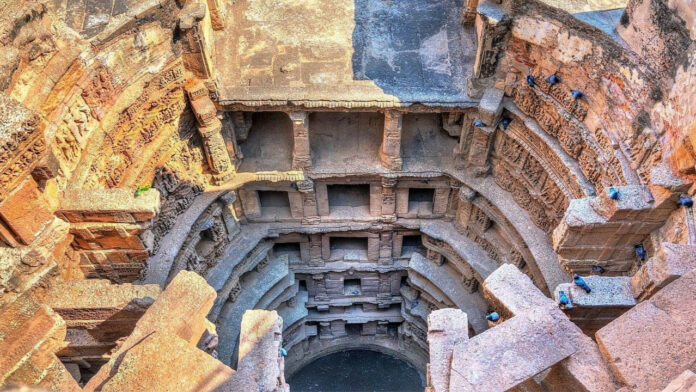In the lively town of Patan, Gujarat, stands Rani ki Vav, also known as “The Queen’s Stepwell.” This remarkable structure showcases the skill and devotion of ancient Indian builders. Recognized as a UNESCO World Heritage site, Rani ki Vav was created by Queen Udayamati in memory of her husband, King Bhima I of the Chaulukya dynasty.

A Rediscovered Wonder
Originally located next to the historic Saraswati River, Rani ki Vav was buried under silt for many years. It wasn’t until the 1940s that this stunning structure was found again. The Archaeological Survey of India began restoring it in the 1980s, bringing back its original beauty. In 2014, Rani ki Vav was officially recognized as a UNESCO World Heritage site.

An Artistic Masterpiece
Intricate Sculptures
Rani ki Vav is one of the largest and finest examples of stepwell architecture in Gujarat. It features seven levels of stairs, all decorated with detailed sculptural panels. There are over 500 major sculptures and countless smaller ones that show a mix of religious and everyday themes from ancient life.

Architectural Features
The design of Rani ki Vav is similar to the Vimalavasahi temple on Mount Abu, suggesting it was built around 1032 CE. The well measures about 65 meters long, 20 meters wide, and goes down to a depth of 28 meters, leading to a deep rectangular pool at the bottom.

A Journey Through History and Culture
Visiting Rani ki Vav feels like stepping back in time. Every step and sculpture tells a story from a golden era in history. The blend of religious images and symbols from daily life creates a rich tapestry that reflects the past.
Rani ki Vav is not only an architectural wonder but also a cultural treasure. It showcases the beauty and complexity of ancient art. Through this stepwell, we can appreciate the skills of past artisans and the love that Queen Udayamati had for her husband, King Bhima I.
If you’re looking to explore a unique piece of India’s cultural heritage, Rani ki Vav offers a beautiful experience where history, art, and love come together.

